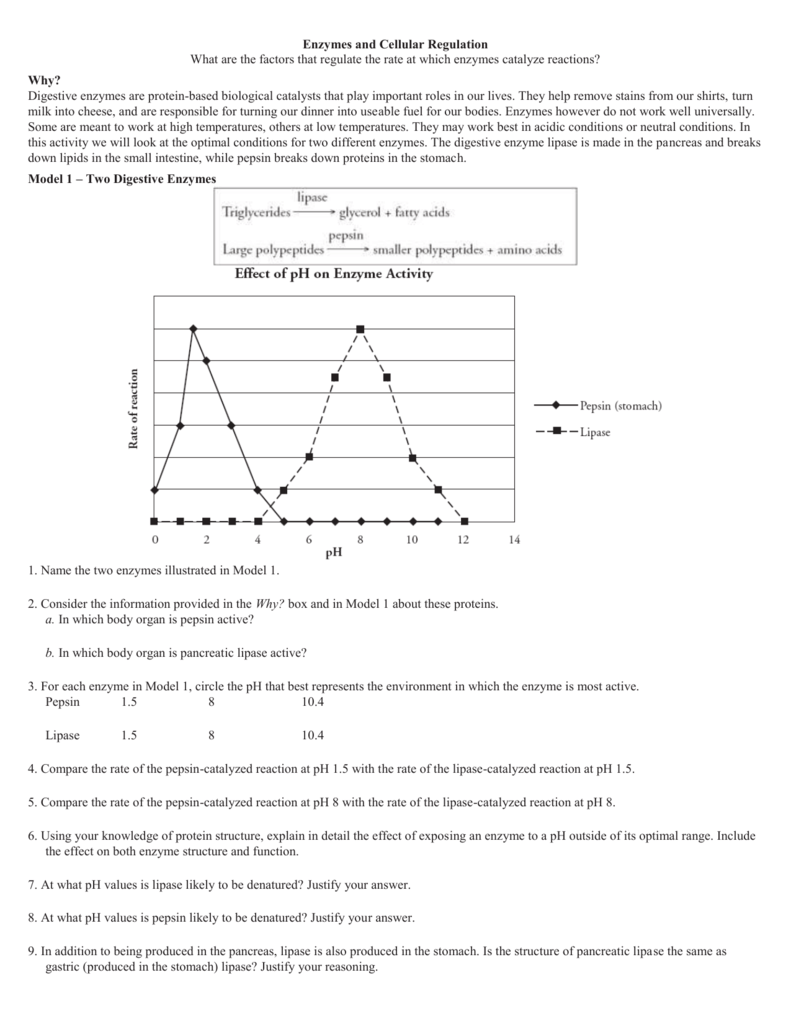Enzymes And Cellular Regulation Answer Key
Incredible Energy in a Cell: Photosynthesis and Cellular Respiration

Photosynthesis and cellular respiration are essential processes that occur within living cells. These processes are responsible for the energy conversion that sustains life on our planet. Let's explore the incredible energy within a cell and dive deep into the world of these fascinating biological mechanisms.
Enzymes and Cellular Regulation

Enzymes play a crucial role in cellular regulation. They are biological molecules that act as catalysts, accelerating chemical reactions within cells. In this article, we will take a closer look at enzymes and how they regulate various cellular processes. Get ready to discover the intricate mechanisms that keep our cells functioning optimally.
The Energy Powerhouse: Photosynthesis
Photosynthesis is the process by which green plants, algae, and some bacteria convert light energy from the sun into chemical energy in the form of glucose. This energy conversion is facilitated by specialized organelles called chloroplasts. Let's delve into the steps involved in photosynthesis:
- Light Absorption: Chlorophyll, a pigment present in chloroplasts, absorbs light energy from the sun.
- Electron Transport: The absorbed light energy is used to transfer electrons through a series of reactions. This generates ATP, the cellular energy currency.
- Carbon Fixation: Carbon dioxide is utilized to synthesize glucose through a process called the Calvin cycle.
- Oxygen Production: As a byproduct of photosynthesis, oxygen is released into the atmosphere, supporting aerobic life on Earth.
Energizing Cells with Cellular Respiration
Cellular respiration is the process through which cells obtain energy by breaking down glucose and other organic molecules. This energy release is vital for various cellular activities, ranging from metabolism to muscle contraction. Let's uncover the stages involved in cellular respiration:
- Glycolysis: This initial step occurs in the cytoplasm and breaks down glucose into two molecules of pyruvate.
- Krebs Cycle: Pyruvate, generated during glycolysis, enters the mitochondria and undergoes further reactions, producing ATP and high-energy electrons.
- Electron Transport Chain: The high-energy electrons generated in the Krebs cycle are transported through a series of protein complexes, generating ATP through oxidative phosphorylation.
FAQs about Cellular Energy
1. Why is photosynthesis important?
Photosynthesis is crucial for the survival of life on Earth. It is responsible for producing oxygen and food (glucose), which serve as the foundation of most ecosystems.
2. What happens if cells don't undergo cellular respiration?
Without cellular respiration, cells would not be able to convert glucose into energy. As a result, essential cellular activities would cease, leading to cell death and ultimately, the organism's demise.
3. How do enzymes regulate cellular processes?
Enzymes are catalysts that speed up biochemical reactions within cells. They provide an alternative pathway with lower activation energy, enabling essential cellular processes to occur at a faster rate.
4. Can cells undergo both photosynthesis and cellular respiration?
No, cells cannot perform both photosynthesis and cellular respiration simultaneously. While plants and some bacteria can perform both processes, they occur in different organelles and serve different purposes.
5. How is energy stored and released in cells?
Energy is stored in the form of ATP (adenosine triphosphate) molecules within cells. When energy is needed, ATP is broken down into ADP (adenosine diphosphate), releasing energy that can be used for cellular processes.
Conclusion
The incredible energy within a cell is a result of the intricate processes of photosynthesis and cellular respiration. Together, these processes enable the conversion of light energy into chemical energy and the release of that energy for cellular activities. By understanding these mechanisms, we gain a deeper appreciation for the complex and interconnected nature of life on Earth.
Cell Cycle Regulation Pogil Answer Key Pdf
 Image Source : myans.bhantedhammika.net
Image Source : myans.bhantedhammika.net Incredible Energy In A Cell Photosynthesis And Cellular Respiration
 Image Source : myans.bhantedhammika.net
Image Source : myans.bhantedhammika.net Enzymes And Cellular Regulation
 Image Source : studylib.net
Image Source : studylib.net enzymes cellular regulation catalyze regulate reactions factors rate which
14 Best Images Of Enzymes Worksheet Answer Key - Enzymes Worksheet
biology worksheet review answers answer key enzymes cell lab virtual worksheeto enzyme reactions cells keys worksheets via practice controlled
Enzyme And Cellular Regulation Pogil - Enzymes And Cellular Regulation
 Image Source : www.coursehero.com
Image Source : www.coursehero.com cellular regulation pogil enzyme enzymes
Worksheet_-_Enzymes_ANSWER_KEY.pdf - Eastern Regional High School
 Image Source : www.coursehero.com
Image Source : www.coursehero.com enzymes
Enzyme Answers_ADAC.docx - Answer Key Enzymes And Cellular Regulation
 Image Source : www.coursehero.com
Image Source : www.coursehero.com enzyme answers enzymes adac docx cellular answer key rate
Copy_of_POGIL_Enzymes_and_Cellular_Regulation_student_answer_sheet
 Image Source : www.coursehero.com
Image Source : www.coursehero.com pogil enzymes cellular regulation
Enzyme and cellular regulation pogil. Enzyme answers enzymes adac docx cellular answer key rate. Incredible energy in a cell photosynthesis and cellular respiration. Cell cycle regulation pogil answer key pdf. Enzymes and cellular regulation